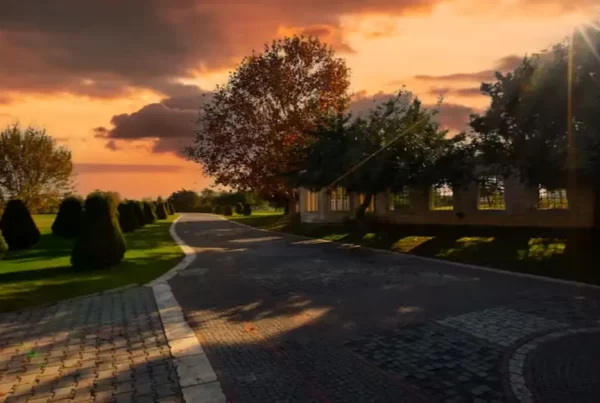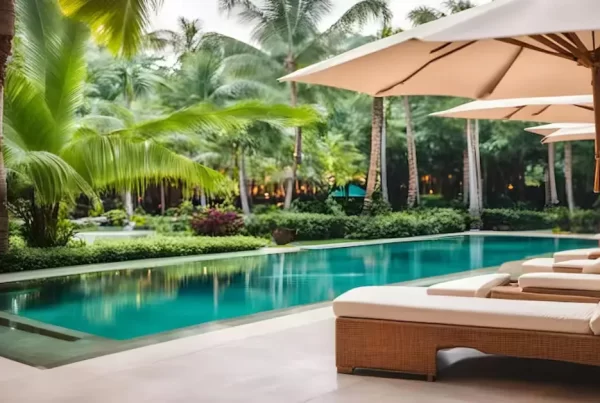Swimming pool installation has transformed recreational amenities into vital facets of contemporary living. Beyond mere relaxation, these pools serve as hubs for social gatherings and spaces for fitness and rejuvenation. Amid scorching heat or at day’s end, immersing in the refreshing waters revitalizes both mind and body, making pool ownership an essential element of modern lifestyles.
Overview of the Blog’s Focus on Swimming Pool Installation Works
This blog aims to dissect the intricate process of installing swimming pools, providing an in-depth exploration of various types, installation methods, considerations, and maintenance tips. From the initial planning stages to the final touches, we’ll uncover the nuances of turning your pool dreams into a stunning reality.
Teaser of What Readers Can Expect to Learn
Readers embarking on this journey will gain insights into:
- Different types of swimming pools and their unique features.
- Crucial planning steps before initiating a pool installation project.
- The pros and cons of hiring professionals versus a DIY approach.
- Step-by-step guidance through the installation process.
- Navigating permits, regulations, and safety measures.
- Essential maintenance tips for long-term pool care and enjoyment.
 Types of Swimming Pools
Types of Swimming Pools
In-Ground Pools
1. Description and Benefits
In-ground pools are popular for their durability, aesthetic appeal, and customization options. Constructed within the ground, these pools seamlessly blend with the landscape, enhancing the property’s value. They offer versatility in design, allowing for various shapes, sizes, and depths, catering to individual preferences. The in-ground structure ensures a long-term investment, adding a touch of sophistication to outdoor spaces.
2. Installation Process and Considerations
The installation of in-ground pools involves meticulous planning and execution. It typically includes several phases:
- Design and Planning: Collaborate with professionals to create a customized design considering the landscape, materials, and desired features.
- Excavation: Digging the pool area to the specified dimensions, requires heavy machinery and skilled labour.
- Structural Installation: Constructing the pool shell using materials such as concrete, fibreglass, or vinyl, ensuring structural integrity.
- Finishing Touches: Adding features like tiling, decking, lighting, and landscaping to enhance aesthetics and functionality.
Considerations:
- Cost: In-ground pools usually have higher installation costs due to excavation and construction complexities.
- Maintenance: They may require more maintenance but offer durability and aesthetic appeal in return.
Above-Ground Pools
1. Features and Advantages
Above-ground pools are versatile, cost-effective, and easier to install compared to their in-ground counterparts. These pools come in various shapes and sizes, catering to different space constraints and budgets. They’re often made of durable materials like steel, aluminium, or resin and can be dismantled or relocated if needed.
2. Installation Methods and Factors to Consider
Installation of above-ground pools is relatively straightforward:
- Site Preparation: Level the ground and ensure a stable base to support the pool.
- Assembly: Erect the pool walls, install the liner, and assemble the framework.
- Filling and Finishing: Fill the pool with water, add accessories like filters and pumps, and perform water balancing.
Considerations:
- Affordability: Above-ground pools are generally more budget-friendly than in-ground options.
- Portability: They’re easier to disassemble or move, making them suitable for temporary setups or changing locations.
Other Specialized Pool Types (Infinity Pools, Lap Pools, etc.)
Beyond the traditional in-ground and above-ground options, specialized pools cater to specific preferences:
- Infinity Pools: Known for their visually striking design, these pools create a seamless illusion of water extending to the horizon, often overlooking scenic views.
- Lap Pools: Designed for fitness enthusiasts, these narrow pools facilitate continuous swimming and are ideal for smaller spaces.
These specialized pools offer unique features and serve distinct purposes, appealing to niche preferences and specific functionalities.
Planning Your Pool Installation
Assessing Space and Area Requirements
Before commencing any pool installation, it’s crucial to evaluate the available space and area requirements:
- Space Dimensions: Measure the available area for the pool, considering setbacks, utilities, and zoning regulations.
- Accessibility: Ensure adequate space for construction equipment and future maintenance access.
- Utility Lines: Identify and mark underground utility lines to avoid interference during excavation.
Budget Considerations and Cost Breakdown
Budgeting is a vital aspect of planning a pool installation:
- Cost Factors: Consider costs associated with excavation, materials, labour, permits, landscaping, and additional features.
- Quotes and Estimates: Obtain quotes from multiple pool contractors and factor in ongoing maintenance expenses.
- Contingency Fund: Set aside a contingency budget for unforeseen expenses or design modifications.
Design and Style Choices
1. Pool Shapes, Sizes, and Materials
Pool design choices significantly impact aesthetics and functionality:
- Shapes and Sizes: Choose a pool shape (rectangular, oval, freeform) and size that complements the available space and suits your preferences.
- Materials: Evaluate materials like concrete, fibreglass, or vinyl for the pool structure, considering durability, maintenance, and aesthetic appeal.
- Depth and Features: Determine the pool depth and incorporate features like steps, benches, or diving boards based on intended use.
2. Landscaping and Additional Features (Decking, Lighting, etc.)
Enhance the pool area with thoughtful landscaping and additional features:
- Decking: Select suitable decking materials (wood, composite, stone) that blend with the pool design and provide functional space for relaxation and entertainment.
- Lighting: Plan for ambient and functional lighting to extend pool usage into the evening, ensuring safety and ambience.
- Other Features: Consider water features, such as fountains or waterfalls, as well as amenities like seating areas or outdoor kitchens to complement the pool area.
By meticulously planning and considering space, budget, design, and additional features, individuals undertaking a pool installation project can ensure a well-thought-out and aesthetically pleasing outcome. This comprehensive approach will enable readers to make informed decisions while planning their swimming pool installation works.
Hiring Professionals vs. DIY
Advantages of Hiring Professional Pool Installers
Expertise and Experience
Professional pool installers possess specialized knowledge and experience, ensuring a seamless installation process. They understand the intricacies of various pool types, materials, and local regulations.
Quality Assurance
Professionals prioritize quality, utilizing proper techniques, tools, and high-quality materials. Their expertise minimizes the risk of errors, ensuring a durable and well-constructed pool.
Compliance and Permits
Pool installers are well-versed in local regulations and acquire necessary permits, ensuring compliance with safety standards and legal requirements.
Warranty and Support
Most reputable installers offer warranties on their work, providing peace of mind. Additionally, they often provide ongoing support and maintenance advice.
Challenges and Risks of DIY Pool Installation
Lack of Expertise
DIY projects need to gain the expertise and experience that professionals bring. This can lead to errors in design, construction, and even safety concerns.
Potential Cost Overruns
Mistakes during DIY installation may result in extra costs for repairs or modifications. Inefficient use of materials or equipment can escalate expenses.
Time and Effort
Pool installation requires significant time, effort, and specialized tools. DIY projects may take longer, especially if unforeseen challenges arise.
Safety Concerns
Improperly installed pools could pose safety hazards. DIYers might overlook critical safety measures, leading to accidents or structural issues.
Steps to Take If Opting for a DIY Approach
Research and Education
Thoroughly research pool installation processes, materials, and local regulations. Educate yourself through reputable resources, guides, and tutorials.
Detailed Planning
Create a comprehensive plan detailing each step of the installation process. Consider space, materials, tools, and safety measures.
Seek Guidance and Assistance
Consult with professionals or experienced individuals for guidance and advice. Attend workshops or training sessions to enhance skills.
Safety Measures
Prioritize safety throughout the project. Use proper safety gear, follow manufacturer guidelines, and ensure compliance with local codes.
Evaluate Complexity
Be realistic about your capabilities. Consider hiring professionals for complex tasks or if uncertainties arise during the process.
Steps in Pool Installation
Site Preparation
Clearing the Area
Begin by clearing the designated area for the pool installation. Remove debris, vegetation, and any obstacles that might hinder the process.
Marking and Layout
Mark the pool’s layout using stakes or spray paint. Accurately measure and outline the pool’s dimensions, ensuring it aligns with the design plan.
Grading and Leveling
Ensure the site is adequately graded and levelled. This step is crucial for a stable and even base for the pool structure.
Excavation and Groundwork
Excavation Process
Excavate the marked area to the required depth, following precise measurements and specifications outlined in the design plan.
Soil Inspection
Inspect the soil composition to ensure it meets stability requirements. Address any issues like rocky terrain or unstable soil conditions.
Backfilling and Compacting
After the excavation, backfill and compact the soil to create a stable foundation for the pool structure.
Pool Structure Installation (If In-Ground)
Constructing the Structure
For in-ground pools, proceed with constructing the pool structure according to the chosen material—commonly concrete, fibreglass, or vinyl.
Formwork and Reinforcement
If using concrete, set up formwork and reinforce with steel bars (rebar) to ensure structural integrity.
Pouring and Curing
Pour the concrete or install the chosen material for the pool structure. Allow adequate time for curing as per manufacturer guidelines.
Plumbing, Electrical Work, and Equipment Installation
Plumbing Setup
Install plumbing components such as pipes, drains, and filtration systems according to the design plan.
Electrical Connections
Set up electrical connections for pool lighting, pumps, heaters, or any additional features requiring electricity.
Equipment Installation
Install necessary equipment like pumps, filters, heaters, and controllers as per manufacturer instructions.
Final Touches and Finishing
Decking and Surroundings
Construct or lay down the pool deck, considering materials like concrete, wood, or pavers. Ensure proper drainage and non-slip surfaces.
Fill and Treat the Water
Fill the pool with water and treat it with appropriate chemicals to achieve the right balance for safe and clean swimming conditions.
Landscaping and Aesthetics
Enhance the pool area with landscaping, adding plants, lighting, and aesthetic features for a visually appealing space.
Permits and Regulations
Importance of Adhering to Local Regulations and Permits
Ensuring Compliance
Adhering to local regulations and acquiring necessary permits is vital during pool installation. It ensures legal compliance and prevents potential fines or legal complications.
Safety and Standards
Regulations are designed to enforce safety standards, covering aspects such as pool depth, fencing requirements, electrical safety, and water quality. Compliance reduces the risk of accidents and ensures a safe environment.
Property Value and Resale
Complying with regulations enhances the property’s value and marketability. It assures potential buyers that the pool installation was carried out legally and meets safety standards.
Overview of Common Regulations and Safety Considerations
Pool Fencing Requirements
Many areas mandate pool fencing to prevent accidental access, especially for households with children. Fences should meet specific height and locking mechanisms for added safety.
Electrical Safety
Installation of electrical components near the pool area must adhere to stringent safety standards to prevent electrocution hazards.
Depth Markings and Safety Features
Regulations often specify the need for visible depth markings and safety features like ladders or steps to ensure safe entry and exit from the pool.
Water Quality and Drainage
Maintaining proper water quality and ensuring effective drainage systems is crucial to preventing health hazards and maintaining a clean environment.
Barrier Codes and Accessibility
Some regions have strict barrier codes, regulating access points to the pool area, ensuring safety and preventing unsupervised entry.
Environmental Regulations
Regulations might include guidelines on water conservation, the use of environmentally friendly materials, and proper disposal of construction waste.
Understanding the importance of adhering to regulations and comprehending common safety considerations provides readers with essential insights into the legal and safety aspects associated with swimming pool installation.
Maintenance and Aftercare
Regular Maintenance Tips for Pool Cleanliness
Skimming and Vacuuming
Regularly skim the pool’s surface to remove leaves, debris, and insects. Use a pool vacuum to clean the bottom and sides, preventing algae buildup.
Brushing and Scrubbing
Brush the pool walls and tiles to prevent algae and calcium deposits. Focus on areas prone to buildup, such as corners and steps.
Filter Cleaning and Maintenance
Clean or backwash the pool filter regularly to ensure proper filtration and circulation of clean water.
Water Level and Balance
Monitor the water level and maintain it to prevent strain on the pump. Regularly test and balance water chemistry—pH, alkalinity, and chlorine levels—to prevent bacteria growth and maintain water clarity.
Importance of Proper Chemical Balance and Water Treatment
Sanitization and Disinfection
Maintaining proper chemical balance is crucial for sanitization. Chlorine or alternative sanitisers kill bacteria and viruses, ensuring safe swimming conditions.
Algae Prevention
Balanced pH levels and adequate sanitiser levels prevent algae growth, maintaining clear and algae-free water.
Water Clarity and Comfort
Properly balanced water enhances swimmer comfort, preventing skin and eye irritation.
Seasonal Considerations and Winterization (If Applicable)
Summer Maintenance
Increase filtration and sanitation during peak usage months. Regularly check and clean filters, and monitor water chemistry more frequently.
Winterization
For regions with cold winters, winterization is crucial. Lower water levels, drain equipment, and add appropriate winter chemicals to prevent damage from freezing temperatures.
Off-Season Care
During periods of non-use, continue to monitor water chemistry, circulation, and filtration to prevent algae growth and equipment damage.
Understanding and implementing regular maintenance, proper chemical balance, and seasonal care are crucial for ensuring a clean, safe, and enjoyable swimming pool experience.
Conclusion
Embarking on a swimming pool installation journey is an exciting endeavour that enhances lifestyle and home value. From understanding the diverse pool types to meticulous planning and the intricate installation process, the path to owning a stunning pool involves careful consideration at every step.
By comprehending the significance of adhering to regulations, the nuances of maintenance, and the choices between professional installation and DIY approaches, you’ve gained a comprehensive understanding of what it takes to create and maintain a beautiful swimming pool.
Remember, the allure of a pool extends beyond aesthetics—it fosters relaxation, fosters health, and fitness, and serves as a gathering hub for cherished moments with loved ones.
As you delve into your pool installation project, prioritize safety, compliance, and meticulous maintenance. Whether seeking professional assistance or embracing a DIY approach, each decision shapes the pool’s outcome and your overall satisfaction.
Let your pool become not just a part of your property, but a cornerstone of joyful memories and moments to treasure for years to come. Dive into your pool installation journey with enthusiasm, knowledge, and a vision for creating your oasis.
So, take the plunge, make informed decisions, and enjoy the refreshing embrace of your meticulously installed swimming pool—a testament to your style and a haven of relaxation.
Happy swimming and creating unforgettable moments!







